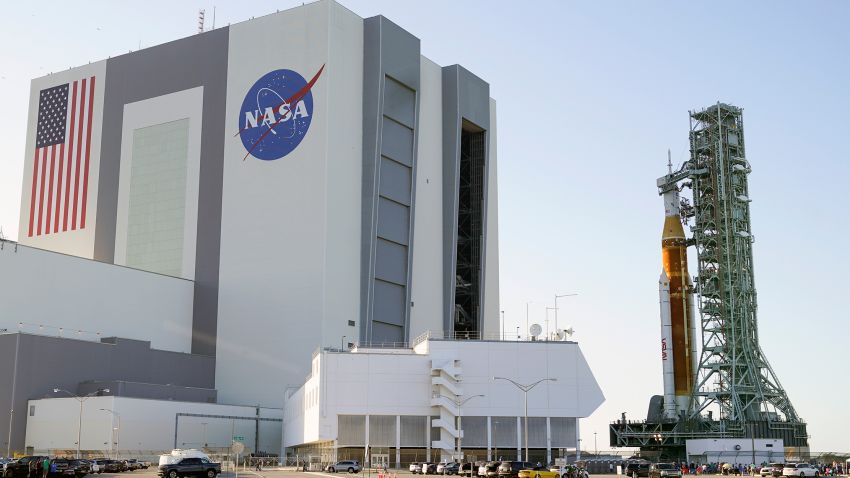Sign up for CNN’s Wonder Theory science newsletter. Explore the universe with news on fascinating discoveries, scientific advancements and more.
Before NASA returns humans to the moon this decade, they have to be able to land on the lunar surface – and that’s going to look a lot different than it did in the Apollo days.
In preparation of this lunar return through the Artemis program, NASA is opening up the competition through a proposal process for a second company to develop lunar lander concepts. In April 2021, NASA determined that SpaceX would be its partner to help land the first woman and the first person of color on the moon by April 2025.
Long-term lunar exploration through a succession of Artemis missions will require sustainable landers that retrieve astronauts from an orbiting lunar outpost called the Gateway and take them down to the moon’s surface. New landing technology under Artemis will also increase the crew capacity, as well as the ability to carry more science and technology to the lunar surface.
Now, NASA wants SpaceX and other companies to develop landers for lunar missions beyond the Artemis III mission, which will be the first to return humans to the moon.
The agency has a two-pronged approach to this. They’re asking SpaceX to put in additional work on landers for a second demonstration mission as part of their existing contract, as well as opening up a competitive opportunity for other US companies to submit their concepts for sustainable landers.
“Under Artemis, NASA will carry out a series of groundbreaking missions on and around the Moon to prepare for the next giant leap for humanity: a crewed mission to Mars,” said NASA Administrator Bill Nelson in a statement.
“Competition is critical to our success on the lunar surface and beyond, ensuring we have the capability to carry out a cadence of missions over the next decade. Thank you to the Biden Administration and Congress for their support of this new astronaut lander opportunity, which will ultimately strengthen and increase flexibility for Artemis.”
The agency will draft up a solicitation within the coming weeks that lays out requirements for the lander proposals and the second contract award will be called the Sustaining Lunar Development contract.
“This strategy expedites progress toward a long-term, sustaining lander capability as early as the 2026 or 2027 timeframe,” said Lisa Watson-Morgan, program manager for the Human Landing System Program at NASA’s Marshall Space Flight Center in Huntsville, Alabama, in a statement.
“We expect to have two companies safely carry astronauts in their landers to the surface of the Moon under NASA’s guidance before we ask for services, which could result in multiple experienced providers in the market.”
The formal request for proposals should be posted by this summer, after NASA hosts a virtual industry day this spring.
More details about funding for Artemis will be shared once the President’s budget is announced next week, Nelson said.
The Artemis road map
During a press conference Wednesday, Nelson provided a larger outline for the Artemis program, beginning with the crewed lunar landing of Artemis III.
“From there, we expect approximately one human landing per year over a decade or so,” Nelson said. “And these are not isolated missions. Each is going to build on the past progress. The discovery and the understanding that we are seeking and what it takes to live in deep space and all of that is of course in preparation for us to have the first human mission to Mars late in the 2030s or 2040.”
“Introducing competition and redundancy to the development of lunar landers can help the Artemis program achieve more flexibility, said Jim Frey, associate administrator for NASA’s Exploration Systems Development Mission Directorate, during the presser.
“That means potentially two companies developing sustaining lander capabilities and two missions landing astronauts on the moon under the criteria we plan to use for the next decade of Artemis crewed missions, in addition to the first landing, all before we ask for recurring services,” Frey said.
Under the new plan announced Wednesday, SpaceX will have an uncrewed demonstration, as well as a crewed one, for Artemis III. Additionally, SpaceX will be able to develop another lander under the new sustainability requirements, which will also have crewed and uncrewed versions as well.
Other companies will also be asked to follow the sustainability requirements and submit concepts for uncrewed and crewed demonstration landers, Frey said.
NASA is anticipating the delivery of these landers within the 2026-2027 time frame, Frey said.
“The purpose of the uncrewed demo is to prove out from a safety standpoint that the lander system will be able to safely land and so it is a critical part of the demonstration strategy that we have in mind before we’re able to put crew on it,” Watson-Morgan said.
The agency arrived at the idea for sustainable landers capable of carrying more crew and cargo because they want to make the most of their time on the moon, Watson-Morgan said Wednesday. And those uncrewed demonstration landings could become good opportunities for testing out more than just returning to the lunar surface.
The uncrewed landers may also be able to carry science experiments aboard to make the most out of each landing, Watson-Morgan said.
“Landings are really precious to us,” she said.



